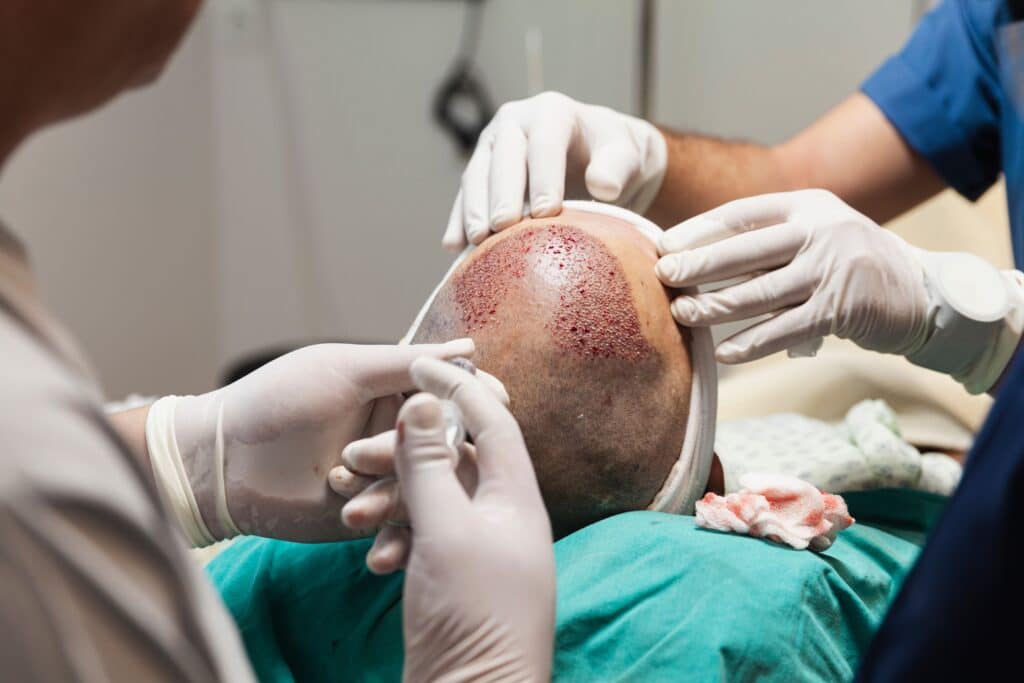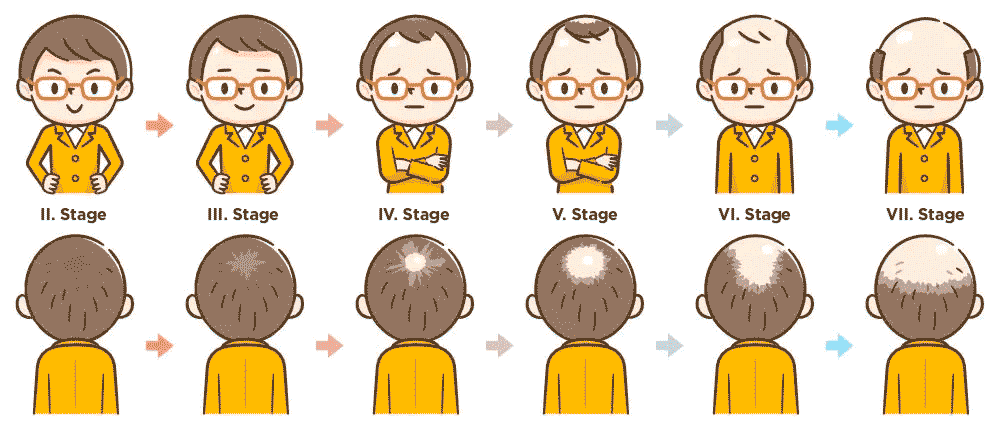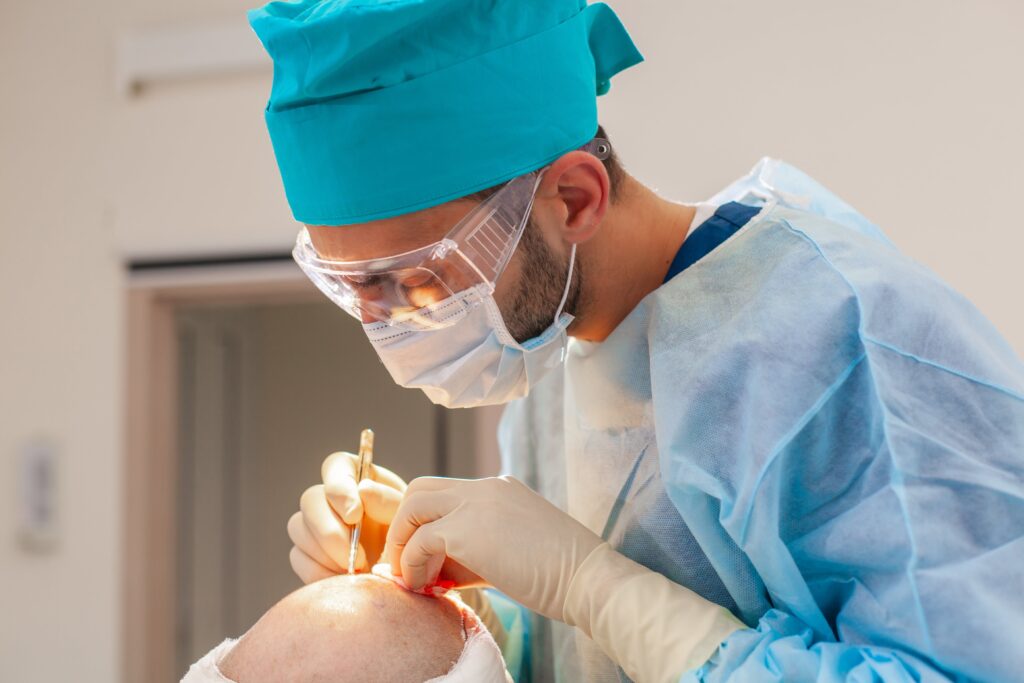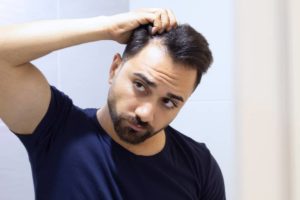Hair transplants are much more effective than other hair loss treatments in providing a long term solution to hair loss. However, many people who might be a candidate for hair transplant procedure are unsure about what exactly the process will involve. Therefore, you might wonder: how many hair graft do I need?
Well, the number of hair grafts that the patient will need depends on the situation. You can transplant between 500 and 6,000 grafts.
The typical hair transplant involves approximately 4,000 grafts. However, the size of the area requiring coverage ultimately determines it.
Anyone researching hair transplants due to hair loss will inevitably encounter the term “grafts.” In a hair transplant, this means the follicular units. In other words, you need to remove hair follicles to fill in bald spots.
The follicles contain hair roots, which produce and form the hair. Hair grows in groups. There can be up to three hair roots in one follicle.
How many grafts can be harvested?

Normally, there are up to 100 grafts on one square centimetre of scalp. But for a satisfactory result, 10 – 25 grafts per square centimetre are sufficient. The progression of hair loss and the size of the bald patches requiring coverage with transplanted hairs determine the number of grafts needed. The quality of the donor area also plays an enormous role.
For example, one person can have 50 grafts per square centimetre, and another can only have 10 grafts per square centimetre. This varies from person to person, as it also depends on the donor hair characteristics, the type of hair, and the quality of hair in the donor area.
For example, with thin and straight hair it is difficult to remove many grafts without the remaining hair losing its fullness. With other types of hair such as thick or even curly hair, more grafts can be harvested, as they appear fuller on their own. A hair analysis can provide more information about your situation.
What does the number of grafts depend on?
The extent of hair loss progression determines the quantity of grafts necessary to achieve a lush and attractive head of hair. This will affect the design of the transplant.
The Norwood Scale serves as a guideline for evaluating the progression of baldness and assists in determining the graft count for transplantation in eligible candidates.

Stages of the Norwood Scale
Stage | Stage of hair loss | How many grafts to be transplanted |
|---|---|---|
Stage I | The hair is still full or the recession of the hairline is not very pronounced | no hair transplantation is necessary |
Stage II | The hairline is already receding slowly and/or a receding hairline is appearing | 500 to 1500 grafts |
Stage III | The receding hairline is already pronounced and is moving towards the back of the head | 1500 to 2000 grafts |
Stage IV | The hair loss is more advanced (for example, the so-called tonsure is already visible) | 2000 to 2500 grafts |
Stage V | The hair loss is now very pronounced both at the hairline and at the back of the head. However, tonsure and receding hairline are still separated by a narrow hair band | 2800 to 3200 grafts |
Stage VI | Hair loss has progressed to the point of semi- baldness | 3500 to 4300 grafts |
Stage VII | Now only a few hairs remain. These form a ring of hair between the ears | 5000 to 6000 grafts |
Stage II patients need about 500 to 1500 grafts to regain a full head of hair, while stage IV patients with male pattern baldness need 2000 to 2500 hair transplant grafts. On average, surgeons transplant around 4,000 grafts during a single operation.
The price of a hair transplant usually correlates with the amount of grafts you have removed. Cosmedica Clinic offers interested patients a free hair analysis, which also includes a cost estimate. You can contact the clinic today. We offer fixed prices so that even large numbers of grafts remain affordable.
What does the donor area look like after the hair transplant?
At the start of the hair transplant process, surgeons harvest grafts from the donor area at the back of the head, specifically from the hairline region between the ears. The special thing about the hair that grows in this area is that it is relatively insensitive to the hormones that cause hair loss.
A reputable hair surgeon will not extract too many grafts. By doing so, a substantial number of donor grafts remain available for future hair transplant sessions. This can be important as hair loss is progressive.
What are the different hair extraction methods?

In the FUT (Follicular Unit Transplant) method, surgeons remove a narrow strip of skin from the back of the head to extract grafts. They then suture the wound with a special technique, leaving only a slim scar.
With the FUE (Follicular Unit Extraction) method, the grafts are removed individually with the help of a hollow needle. An experienced doctor strategically removes individual hairs across the back of the head to minimize the visibility of the extraction post-procedure.
A further development of the FUE method is the Sapphire DHI hair transplant. In this method, specialists use a special implanting pin to remove and then directly reinsert the hairs. This method is very popular, especially for receding hairlines. Cosmedica Clinic specialises in this most modern and method.
FAQ
A broad range of 500 to 6,000 grafts may be needed for a hair transplant. The exact number depends on the extent of hair loss and the size of the balding area. Generally, 4,000 grafts are typical for a significant restoration.
The necessary grafts depend on hair loss severity and the targeted restoration area’s size. The Norwood Scale helps estimate the number of required grafts based on the hair loss stage.
Yes, individual hair traits like density, thickness, and type affect the number of grafts harvestable. Thick or curly hair allows more grafts to be extracted, whereas thin, straight hair limits the number.
Post-transplant, the donor area’s look varies by extraction method—FUT leaves a narrow scar, while FUE and Sapphire DHI spread extractions for an unnoticeable effect.
Hair transplants offer a more enduring resolution to hair loss compared to other treatments. They effectively cover bald spots using the patient’s own hair follicles and are tailored to individual hair loss progress and characteristics.




